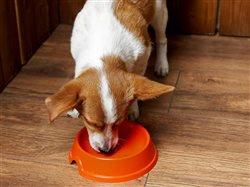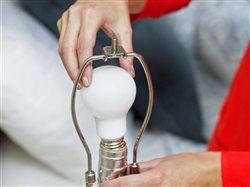Pet food safety: Are you unknowingly putting your cat or dog at risk?
(BPT) - You’re probably careful to make sure the food your family eats is stored and cooked correctly, but what about the food you feed to your pets?
With pet food recalls on the rise, it’s an important concern. Dog food recalls alone have increased almost 190 percent since 2014. And even pet food that is safe when you bring it home must be properly handled and stored to ensure that what you feed your pets won’t cause illness.
“Caring pet parents know food safety is a top concern,” says Dr. Ellen I. Lowery, director of U.S. Veterinary and Professional Affairs at Hill’s Pet Nutrition. “In addition to staying aware of recalls, pet parents should be aware of important elements for determining quality from the time they purchase the food to when they serve it to their pet.”
Dr. Lowery offers these tips for pet food and treat safety:
Check for recalls and alerts
Visit the American Veterinary Medical Association at AVMA.org to check for recalls and alerts within the last year. In July 2015 alone there were 30 pet food advisories for issues such as salmonella and listeria contamination.
Check the bag
What’s printed (or not printed) on a bag gives pet parents key insights into the quality and safety of the food. Look for the AAFCO Statement, required by state pet food regulators, to know the food provides at least the minimum nutritional level necessary for a pet’s particular life stage. Also check that the food is manufactured by the brand itself, like it is at Hill’s. This indicates that the company pays close attention to the food quality standards, rather than outsourcing safety procedures to an outside manufacturer.
Call the pet food company directly
Premium pet foods will include a toll-free number on the bag for pet owners who have questions or need additional information. If there is no number, it’s a red flag.
Wash your hands before and after handling food
As with any food product, wash your hands before and after handling to minimize the possibility of illness for you and your pet.
Use dedicated bowls and utensils
Have a food and water bowl dedicated for use only by your pet and wash them after every use. Do not use the pet’s feeding bowl to scoop the food; instead use a dedicated scooping utensil or spoon that you also clean frequently. Always wash the utensil used for canned food after each use.
Store dry food properly
Dry pet foods should be stored in a dry location to avoid mold growth and at a cool temperature, at least below 100 F. If possible, store dry food in the original bag and keep the bag’s top folded closed. While storing the food in its original bag inside an air-tight plastic container is a good idea, pouring the food into a plastic containers can present a problem if they are not cleaned frequently because the fats from pet food can transfer to the sides of the container and become rancid. If you do use a plastic container, make sure it has a tight lid and wash it each time before refilling it.
Safely handle wet food
Unopened cans should be stored between 50 to 100 F. After feeding your pet, discard any unused portions of wet (canned) foods or refrigerate promptly in a sealed container to reduce bacteria growth. Opened food is best stored in your refrigerator at a temperature between 40 to 45 F for a maximum of five to seven days.
Dispose of spoiled food securely
Ensure pets don’t get into old or spoiled food by placing it in a plastic bag, tying the bag closed and placing it in a covered receptacle. Keep pets away from all garbage and household trash.
“These tips will help pet parents keep their pets healthy and safe,” says Dr. Lowery. “And that peace of mind is priceless.”







